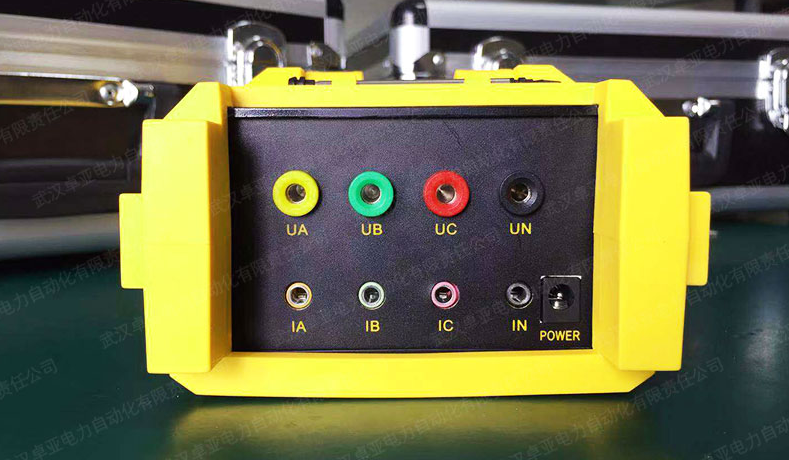August 16, 2021
3303
The phase sequence refers to the sequence in which the three-phase voltage of the generator reaches the maximum value. The phase sequence of the generator and the system are not parallel at the same time. The phase sequence must be checked before the newly installed generators and the overhauled primary circuit generators are paralleled to prevent non-synchronous paralleling. There are many ways to check the phase sequence of generators and power grids, and the common ones are as follows.
Motor method
Use an ordinary three-phase induction motor to connect to the factory power supply. First, the system supplies factory power. Note the rotation direction of the motor. Then use the generator to supply factory power and observe the rotation direction of the motor. If the direction of rotation is the same as that of the grid, it means that the generator and the system have the same phase sequence; if the direction of rotation is different, it means that the phase sequence of the two is different. When the phase sequence is different, stop the generator and exchange any two outgoing wires to check the phase sequence.
Phase sequence table method
Phase sequence meter can only be used when the voltage is below 500V. For newly installed generators, the residual voltage and phase sequence of the generator can be measured at the generator stator outlet without excitation after the first start. After the generator is boosted, for high-voltage generators, you can connect the phase sequence meter to the secondary side of the busbar voltage transformer, and then send the system power supply and the generator to the busbar respectively, and observe the direction of rotation indicated by the phase sequence table. The phase sequence is the same if the direction is the same, and the phase sequence is different if the direction is opposite. For low-voltage units, the phase sequence table can be directly connected to the busbar, the method is the same as above. For a power station with several generators connected to a busbar, you can connect the phase sequence meter to the secondary side of the generator voltage transformer, remove the lead connector of the motor cable (pay attention to keep a safe distance), and then close the generator The isolating switch and circuit breaker are powered by the system and record the rotation direction of the phase sequence table; then pull the motor circuit breaker and isolating switch to restore the cable connection, start the generator to increase the speed and boost to the rated value, then the voltage transformer is connected to generate electricity The generator power supply, observe the direction of the phase sequence table and compare it with the last record, you can judge whether the phase sequence of the generator and the power grid are the same.
Self-made stationary phase sequence indicator
When it is inconvenient to check the phase sequence on the busbar and the factory power supply and there is no phase sequence table, the wiring shall be self-made and immobile phase sequence indicator to check the phase sequence. According to experience, the capacitor C should be above 8μF and withstand voltage not less than 450V; the bulb can be ordinary incandescent lamp, preferably 15W bulb produced by the same manufacturer. It is customary to connect the terminal connected with the capacitor to the neutral phase, which is assumed to be phase B. Because the voltage vector on the capacitor lags behind its current vector, the voltage of the bulb behind it is slightly higher. The brighter bulb is phase C and the darker phase A. For a 400V power supply, two identical bulbs should be connected in series for each phase. After the first measurement, it is best to exchange the positions of the bulbs and measure again. After the bulbs are interchanged, the original bright strain will be dark, and the dark strain will be bright, so as to prevent errors in judgment due to different bulb characteristics. If the brightness of the two-phase bulbs is the same during the measurement, it means that the phase connected to the capacitor is disconnected.
If there is no suitable capacitor on site, the electromagnetic winding of the contactor can be used instead, the iron core armature is closed, and the cotton thread is used to tie it tightly. If there is an electromagnetic winding connected to the middle phase, assuming phase B, since the voltage vector on the inductor is ahead of the current vector, the lighter bulb is phase A, and the darker phase is phase C.
Voltage transformer
Pull the generator circuit breaker and isolating switch apart, use 3 or 2 single-phase voltage transformers, and connect the two ends of each primary side to the bushings on both sides of one phase of the circuit breaker, and the secondary side is twice as large as Incandescent bulb with secondary voltage. Then close the isolating switch to increase the generator speed and voltage to the rated value. If all the bulbs are on and off at the same time, the generator and the power grid have the same phase sequence, otherwise the two-phase positions of the generator outlet must be exchanged and checked again. In power stations that use high-voltage switchgear as the main switch of the generator, this method is used to check the phase sequence, and it is difficult to ensure the safety distance between the lead wires and the ground.
For low-voltage units, voltage transformers are not required, but each phase should have two 220V bulbs connected in series and connected across the circuit breaker. As long as the generator is in the same phase sequence with the grid and the frequency and voltage are very close, three groups of instructions The bulb will be on and off continuously at the same time, otherwise the three-phase light will not change in the same light and dark, but rotate and emit light.
